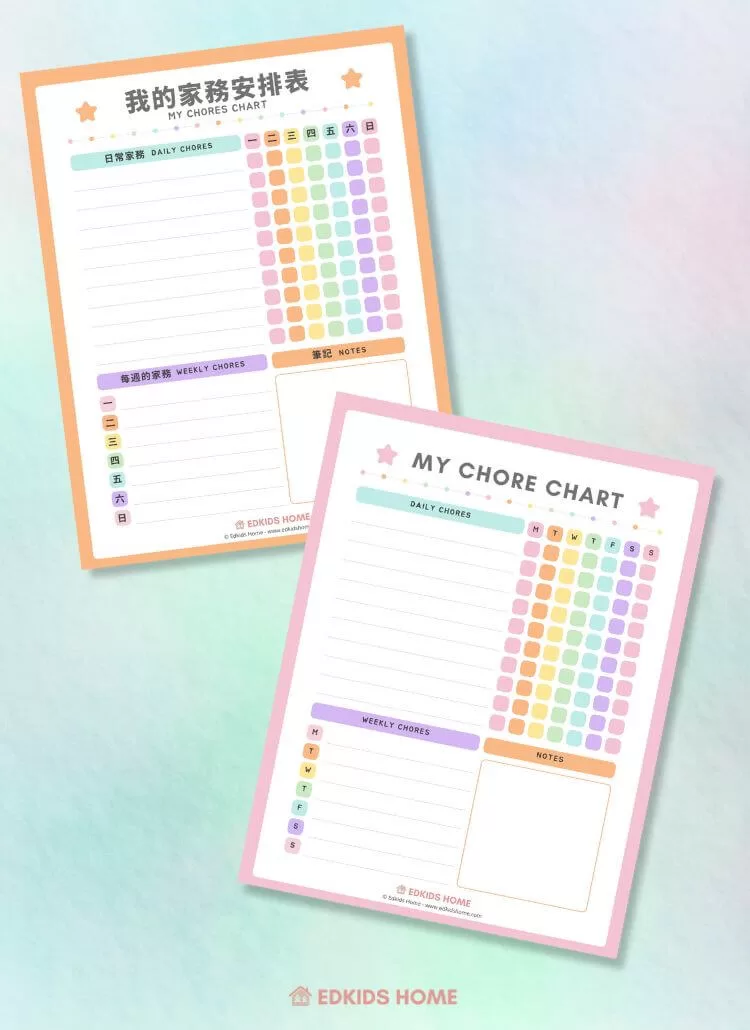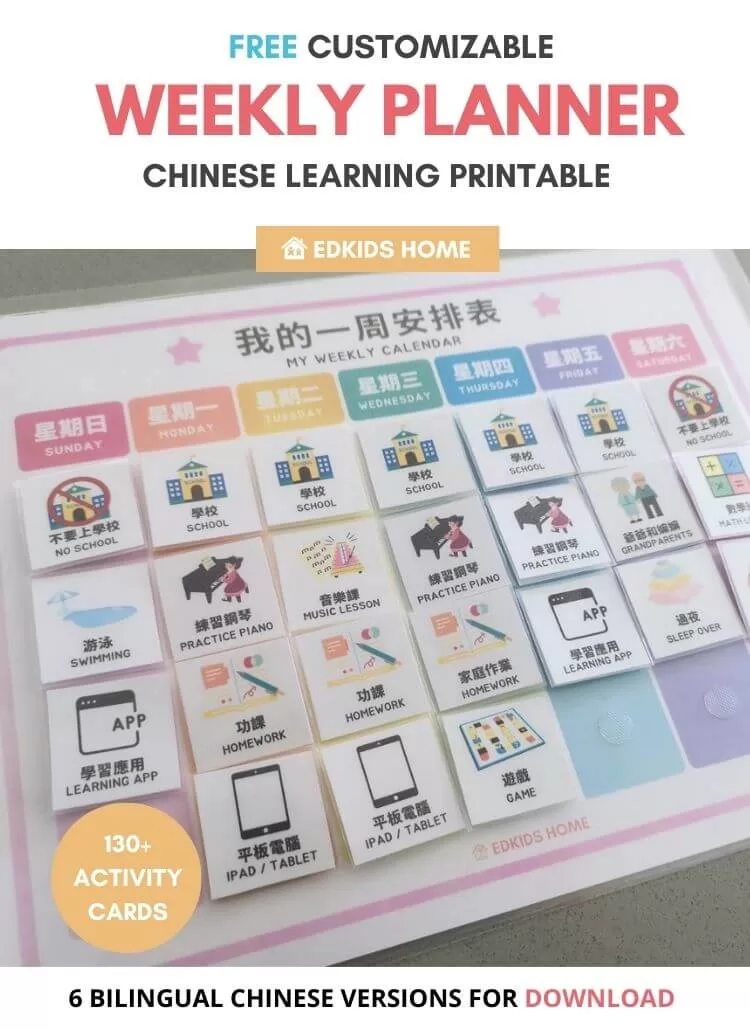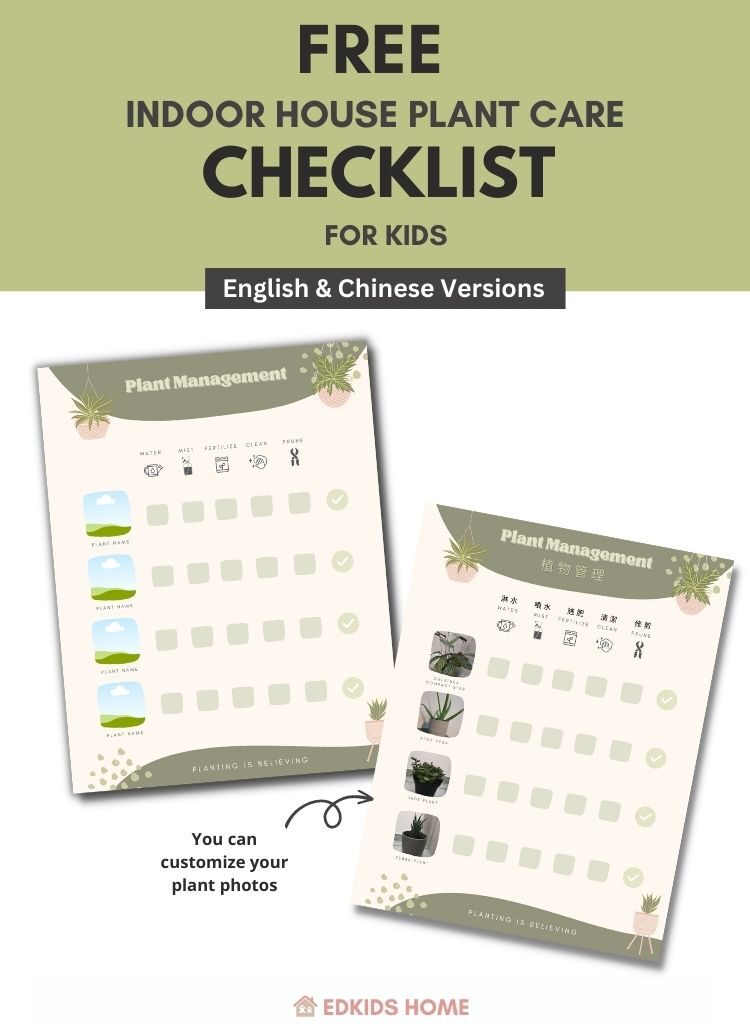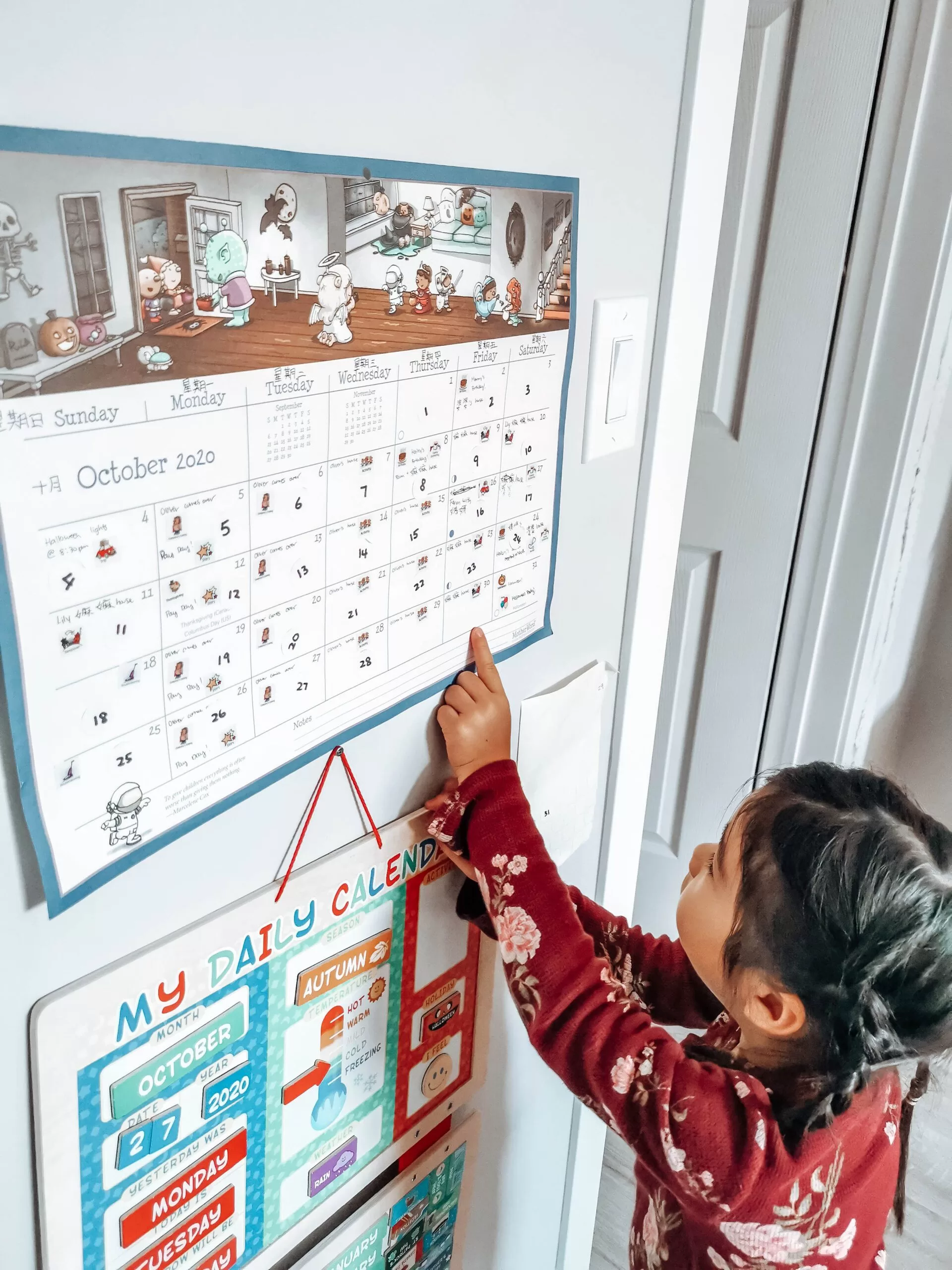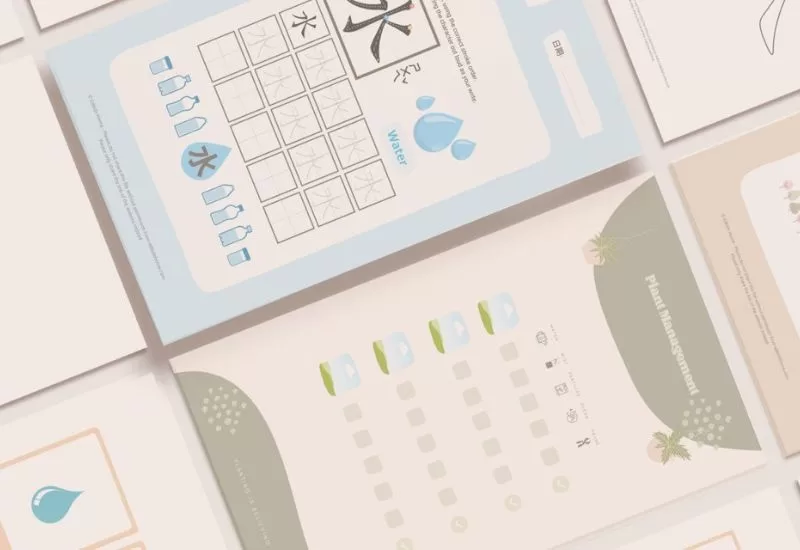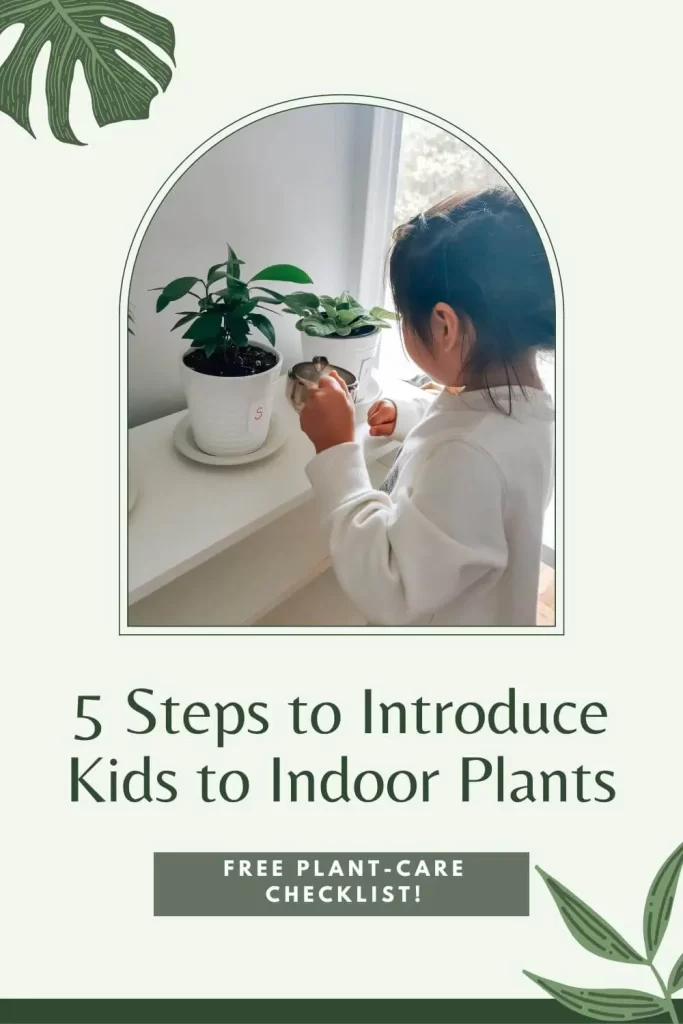
Do you have indoor house plants at home? Are you trying to get your kids to take care of plants, but they just don't seem interested? Keeping plants alive is challenging, especially if you're constantly travelling or busy with your kids. Here's a way to get your kids excited about taking care of plants – give them a plant-care checklist!
It's easy to use and will help them stay on top of things. They'll be able to see their progress as they check off each plant they finish taking care of. And before you know it, they'll be experts at taking care of plants!
Plants bring a house to life.
Sharon Lovejoy
Occasionally, my kids would play with my indoor house plants, causing damage.
This displays a warning sign that I should be instructing them to care for plants.
My son began learning about plant care at the age of one.
He does not abuse any indoor house or garden plants since he was taught about their care early in life.
He understands the vital role played by plants.
5 Steps for Introducing Your Kids to Indoor Plants With Plant-Care Checklist
Teaching kids how to take care of indoor house plants is an excellent opportunity to learn about responsibility. Ready to get started?
Here are 5 easy steps for teaching your kids about plant care. And don't forget, I have created free plant care checklist just for you and your kids! It is available in English and Chinese (Traditional, Simplified, Zhuyin, Pinyin).
Step 1: Introduce Kids to Indoor House Plants & Explain Their Importance.
Having a green, growing thing to tend is a wonderful relationship for a child.
Sharon Lovejoy
Indoor plants make a house feel like home, and they can also be pretty to look at.
There are different kinds of plants, each with a unique job of improving our lives.
Some plants help us breathe better, and some make sleeping easier.
Caring for a houseplant can teach life lessons.
Randy Seagraves
Kids learn to consider the needs of another living thing and the consequences if they don't.
Another benefit for us is that indoor house plants come without a pet's full-scale responsibility.
Kids can learn more about indoor plants by reading up on them.
This will not only teach them about the different types of plants, but it will also interest them in taking care of plants.
Here are some recommended children's books about plants:
- Planting a Rainbow by Lois Ehlert
- The Tiny Seed by Eric Carle
- The Water Princess by Susan Verde
- My First Book of Houseplants by Duopress Labs
- What's Inside a Flower? by Rache Ignotofsky
- Seeds Move! by Robin Page
Here are some recommendations for Chinese books:
- Plant the Tiny Seed • 壓一壓、澆澆水,魔法種子
- A Plant's Secret • 植物的祕密
- My Little Flowers • 我的花卉寶寶
- Sunflower • 向日葵
Step 2: How to Take Care of Indoor Plants with Plant-Care Checklist
Introduce your kids to the different types of indoor plants and explain what each one needs to stay healthy.
You can even let them help you pick an indoor plant for their room!
Talk about how much sun and water each plant needs and whether or not it likes being outdoors or indoors.
You can utilize the plant-care checklist as a guide for your kids.
Repotting
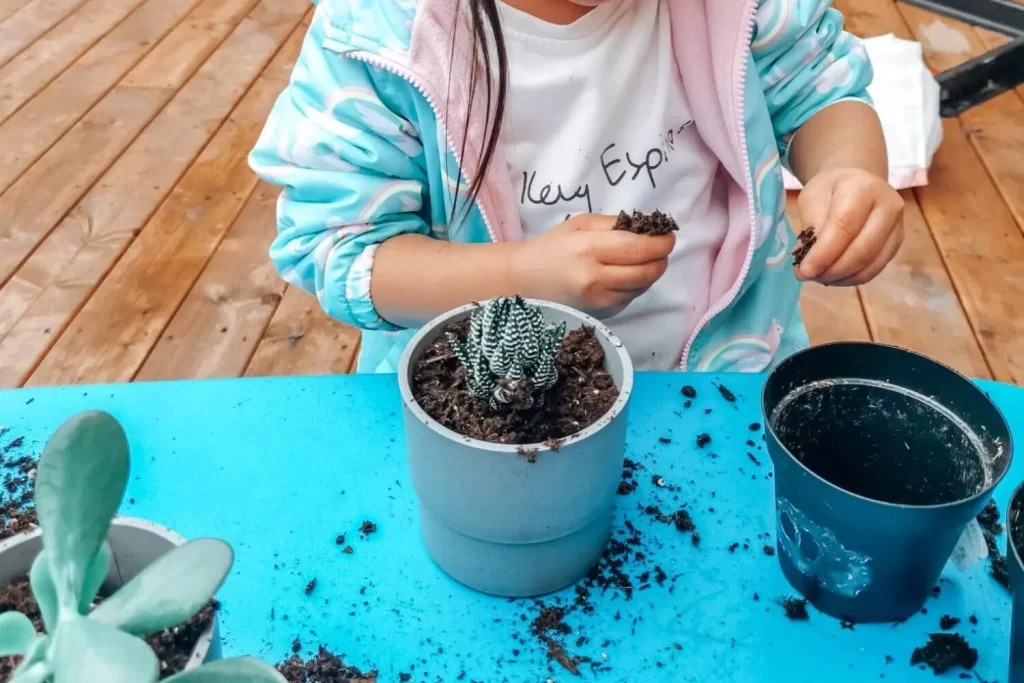
When your indoor plant is getting bigger, you will need to put it in a bigger pot. This is called repotting.
You will need a new pot larger than the old one, some soil, and the indoor plant itself.
First, take the indoor plant out of the old pot.
If the roots are all tangled up, use some scissors to cut them apart. Then, put the indoor plant in the new pot and fill it with soil.
Pack the soil around the roots so the house plant can stand up straight. Water it well and put it in a sunny spot.
Ask your kids to help you with repotting will give them a sense of responsibility for their indoor plants.
They will also learn to be gentle with plants and not damage their roots.
Watering
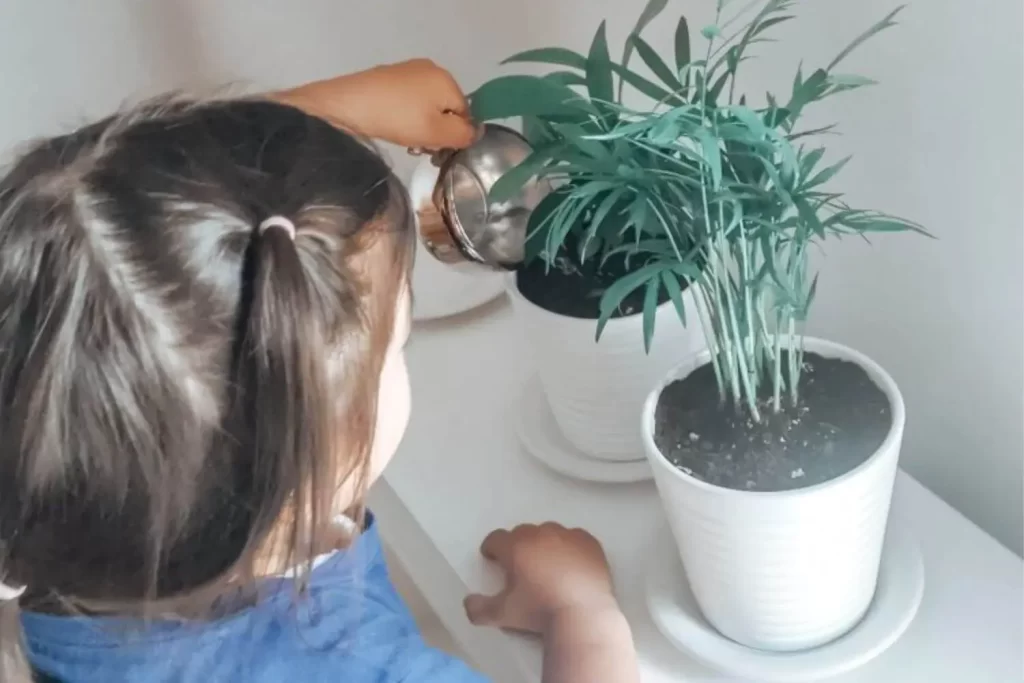
Watering is something that most kids can accomplish. However, they may also determine whether it's time to water the indoor plants.
Allow your kids to stick a finger in the dirt. Inquire what it feels like.
Is it dry or wet? Comment on how the leaves appear different when thirsty or just had water.
Discuss how plants take water from their roots and how there is plenty of water for them to drink when the soil is still moist.
Misting
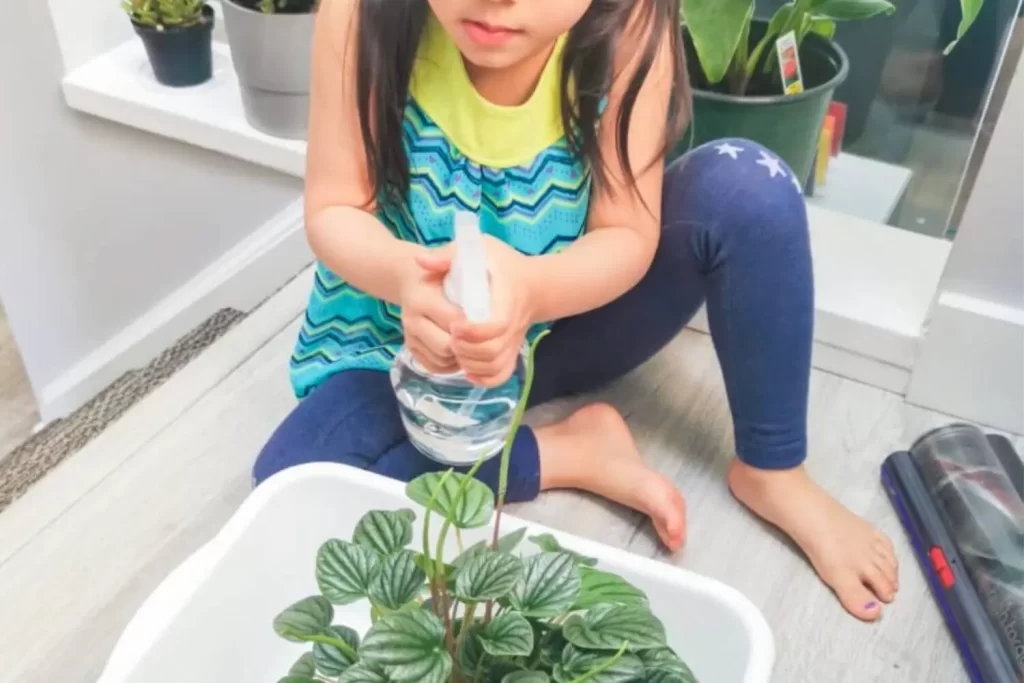
Kids will love squirting their own spray bottles to help them avoid over-watering the plants and spills.
Squirting a spray bottle or mister is fun and great for developing motor skills!
You can also show them how to mist plants, which is an excellent way to give them some water.
Fertilizing
Fertilizing indoor plants is another way kids can help take care of them.
Many different types of fertilizers can be used, each with another purpose.
You can find organic or chemical fertilizers, liquid or granular, slow-release or fast-release.
Choosing the right fertilizer for your plants is essential to get the best results. Different plants need different fertilizers, and using the wrong one can do more harm than good.
You should also be careful not to over-fertilize your plants, as this can also damage them.
Your kids can help you measure the correct amount of fertilizer to use, and then you can help them spread it around the plant's base.
Be sure to read the fertilizer container instructions carefully to know how much to use and when to use it.
Cleaning
Cleaning the plant leaves is crucial because it removes dust and dirt that can block the pores on the leaves.
This can enhance the plant from taking in sunlight and getting the nutrients it needs.
Kids can clean the leaves with a soft cloth.
Here is a list of common indoor plants and some tips on how to take care of them:
- Aloe Vera: water about every three weeks, place in bright light
- Snake Plant: water about every two weeks, can tolerate low light
- Spider Plant: water about once a week, thrives in bright light
- Peace Lily: water about once a week, does best in low light
Read more about common indoor plants: 33 Best Indoor Plants for Beginners.
If you do not want to spend time researching how often you should take care of the plants, there is an app called Planta I use, which makes my life easier when taking care of indoor plants.
Planta is an app that helps you take care of plants. It includes a plant guide with photos and information on over 150 plants, a plant diary to track plant growth, and a weather forecast tool to help plan plant watering.
Pruning
Pruning is another activity that kids can help with. It is an excellent way to teach kids about how plants grow. You can show them to cut off dead leaves and flowers. You can also let them help you shape the plant by trimming it.
Step 3: Prepare the Plant-Care Checklist.

This free plant care checklist printable is a daily schedule for your kids to know which plant needs to care for.
Here are the steps for you to prepare the printable for your kids:
- There are two options for editing this printable:
- Print this printable, glue the plant pictures, and write down the plant names on the printable. Or
- Edit the printable via Canva, drag the selected photos in the printable and type down the plant names. Print the printable after you have finished editing.
- Laminate the printable.
- Mark with a whiteboard marker what type of plant care each plant needs. I use Planta to guide me whether which plant needs to be watered, misted, fertilized, cleaned, or pruned.
- Offer the plant care checklist printable for your kids. This is how I introduce the printable to my kids:
“I have an important job for you. You'll be in charge of indoor plants. This (gives the printable to kids) is the plant care checklist that will help you take care of all the indoor plants. Are you ready to begin?”
Once your kids receive the plant care checklist printable, they can initially start taking care of the indoor plants with your guidance.
After taking care of each plant, you can show your kids to draw a checkmark (right side). Eventually, they can do it on their own without your supervision!
Step 4: Check-In With Kids Regularly to Make Sure They’re Following the Plant-Care Checklist and Help Them if Needed.
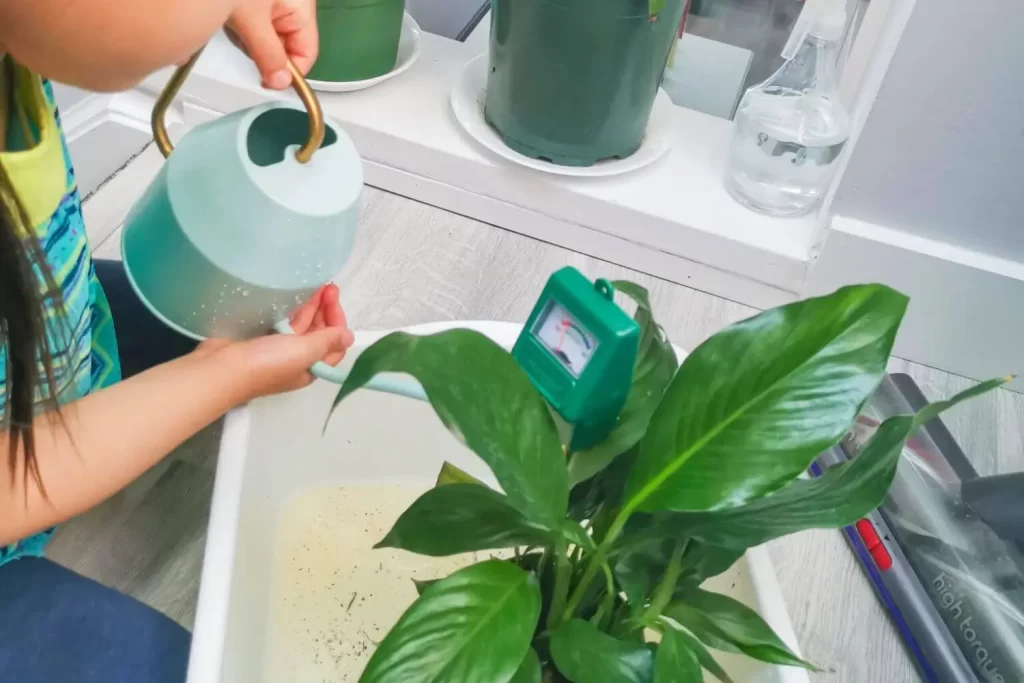
It's essential to check in with your kids regularly to make sure they're following the plant care checklist and helping them if they need it.
If they're having trouble, be there to help them out. With some guidance, they can take care of any indoor plant!
Step 5: Reward Kids for Completing Their Tasks Using Plant-Care Checklist
One way to encourage kids to take care of plants is to reward them for completing their tasks on time.
This could be a special treat, such as an extra hour of playtime, or extra privileges, such as staying up a little later than usual.
Kids will be more likely to continue working on plant chores if they know they will be rewarded for doing so.
As always, with some encouragement, they'll be able to take care of any indoor plant!
Indoor Plants Safety Tips
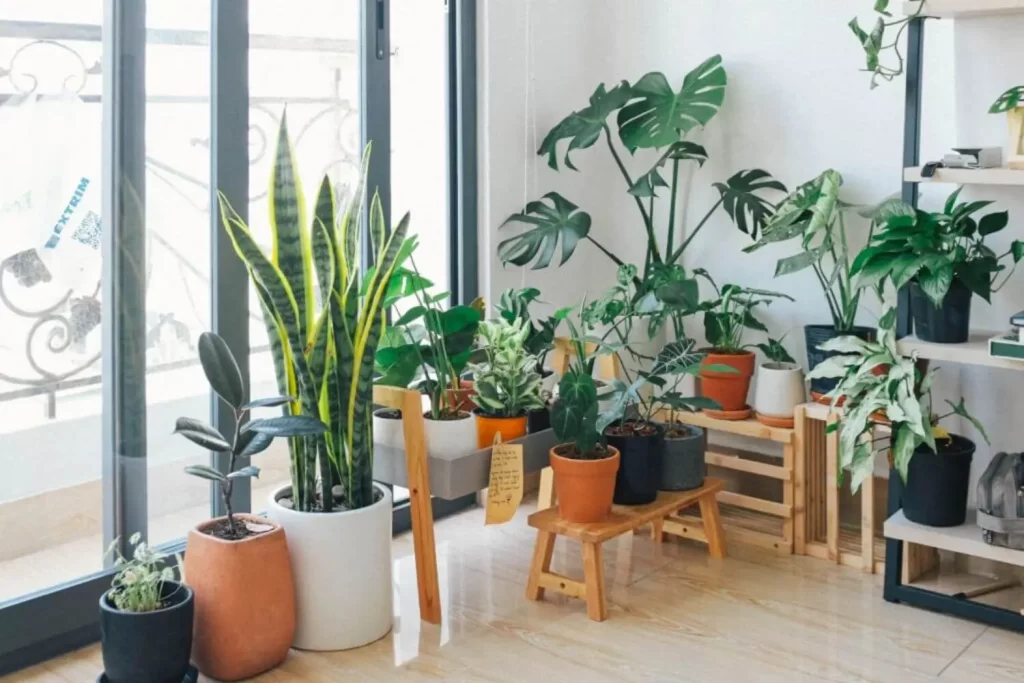
- Teach kids to never eat the leaves of indoor plants, as some may be poisonous.
- Ensure kids know to clean up loose leaves or debris from plants, as these can be a choking hazard.
- Keep potentially toxic plants out of reach of kids, or avoid them altogether.
- If you have any cacti in your home, teach kids that cacti are for looking at and not for touching. Keep them high on a shelf, so they are out of reach.
Conclusion
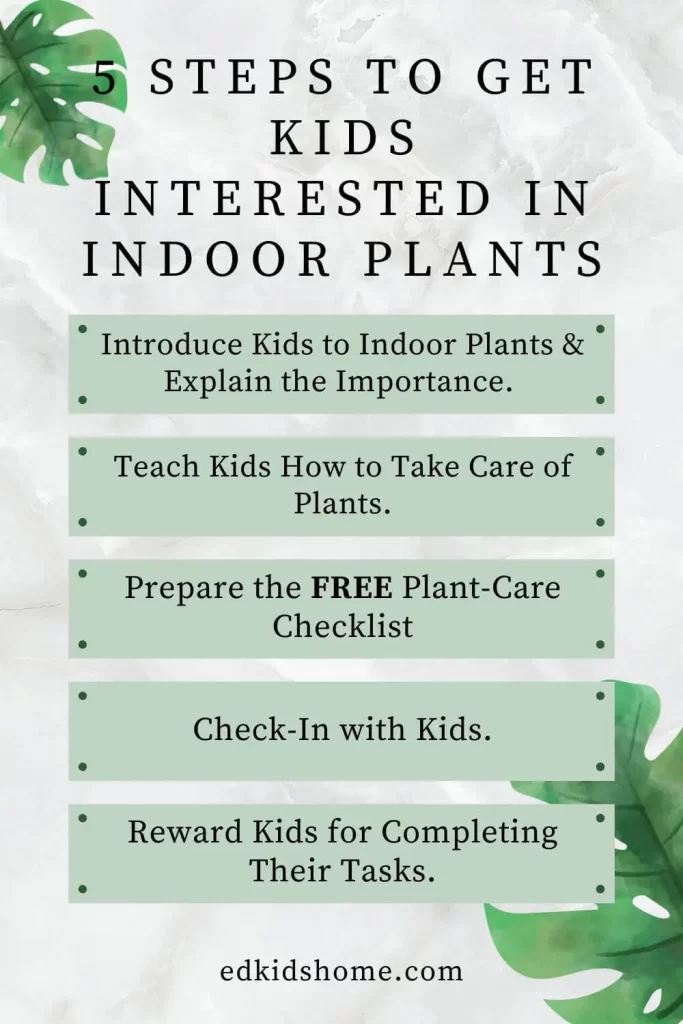
With these five steps, your kids will be well to becoming plant caretakers with the plant-care checklist!
- Step 1: Introduce Kids to Indoor Plants and Explain the Importance.
- Step 2: How to Take Care of Indoor Plants with Plant-Care Checklist
- Step 3: Prepare the Plant Care Checklist.
- Step 4: Check In With Kids Regularly to Make Sure They’re Following the Plant-Care Checklist and Help Them if Needed.
- Step 5: Reward Kids for Completing Their Tasks Using Plant-Care Checklist
Teaching our kids to take care of indoor plants has many benefits. They'll learn responsibility, gain a new hobby, and improve their focus and concentration. Not to mention, they'll be making your home a healthier place to live! What more could you ask for? So go ahead and get started today! Don't forget to let your kids choose their own plants!
Download: Free Plant Care Checklist
Available in English, Chinese (Traditional, simplified, Zhuyin, Pinyin)
